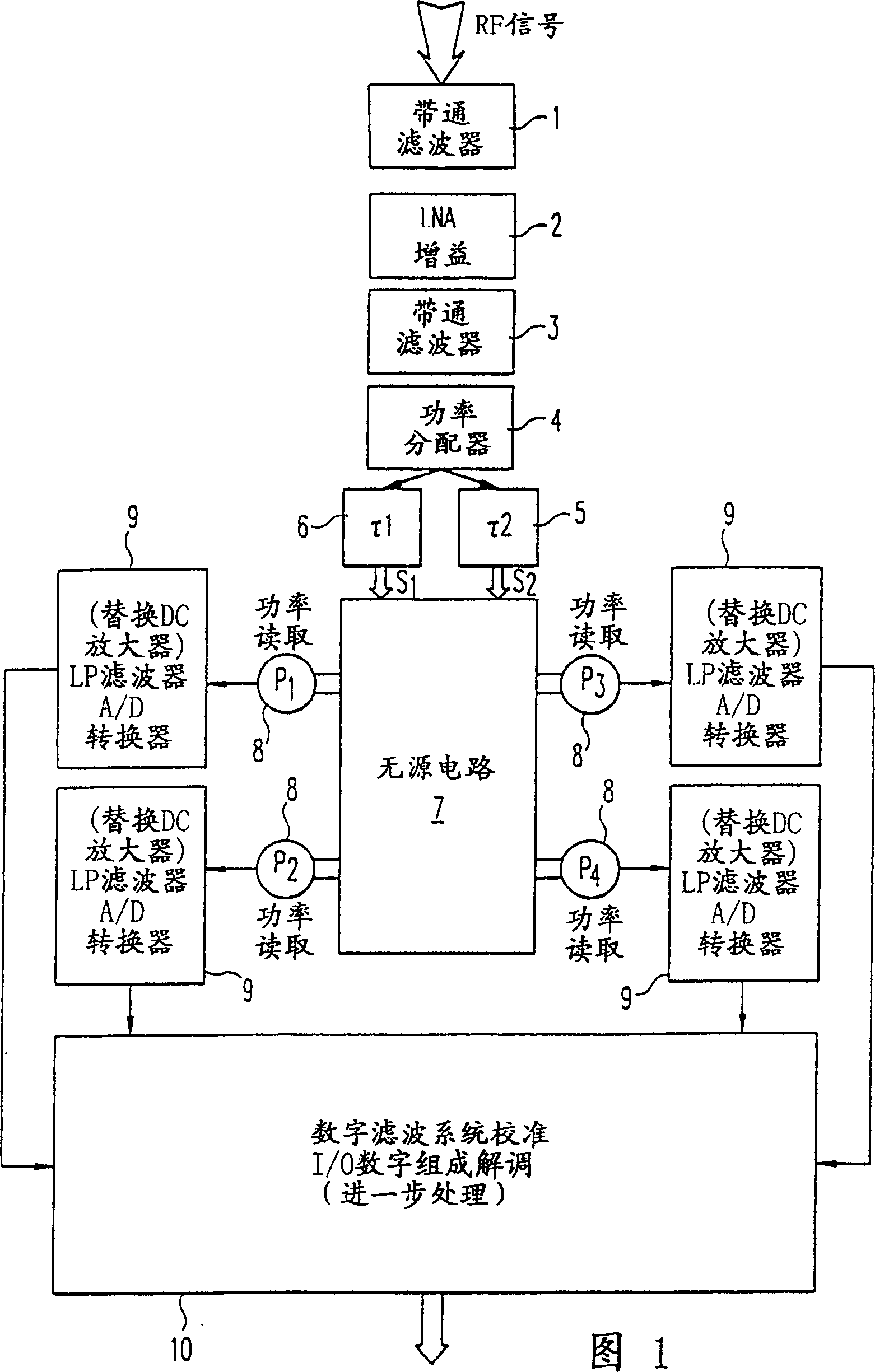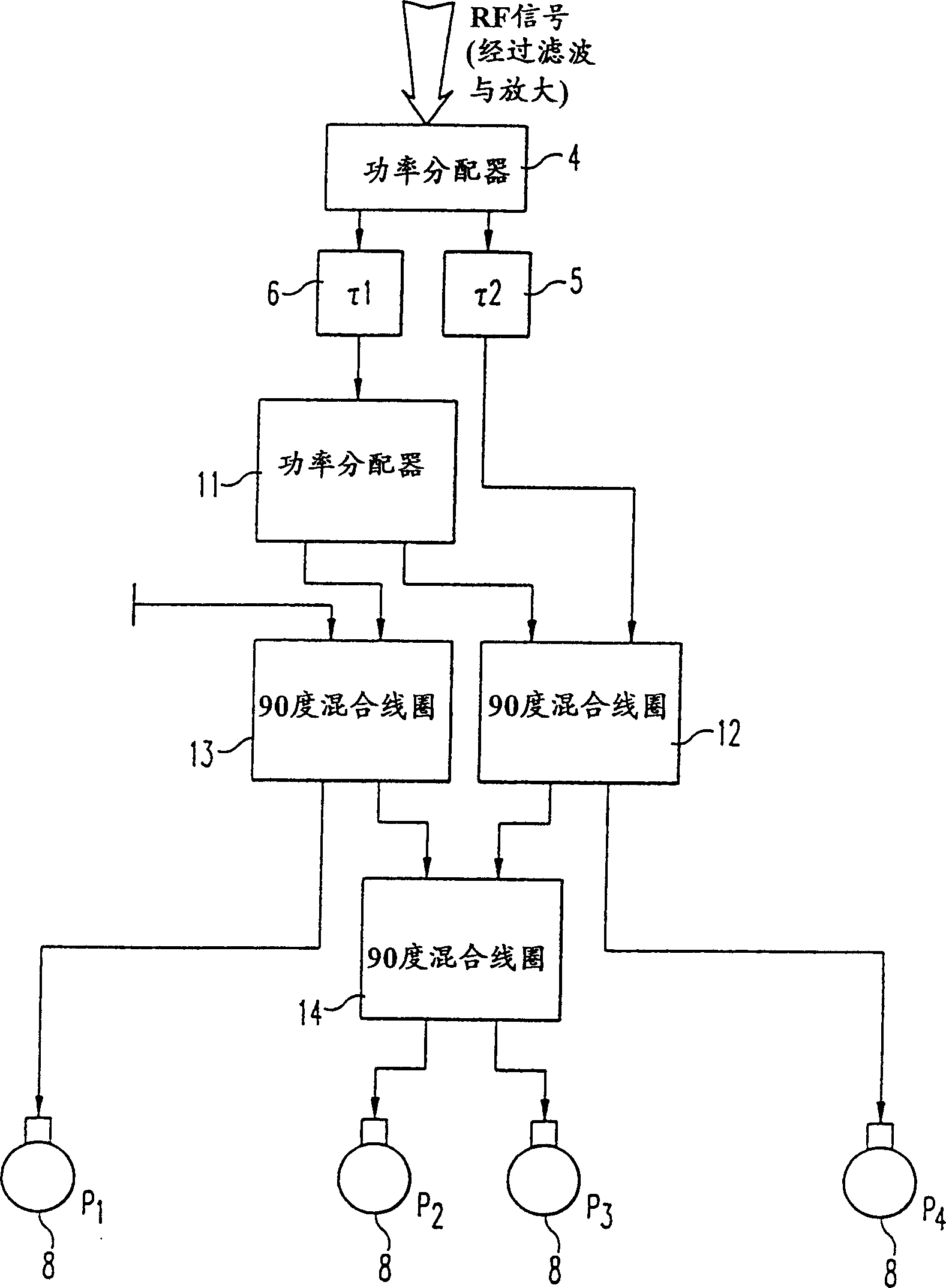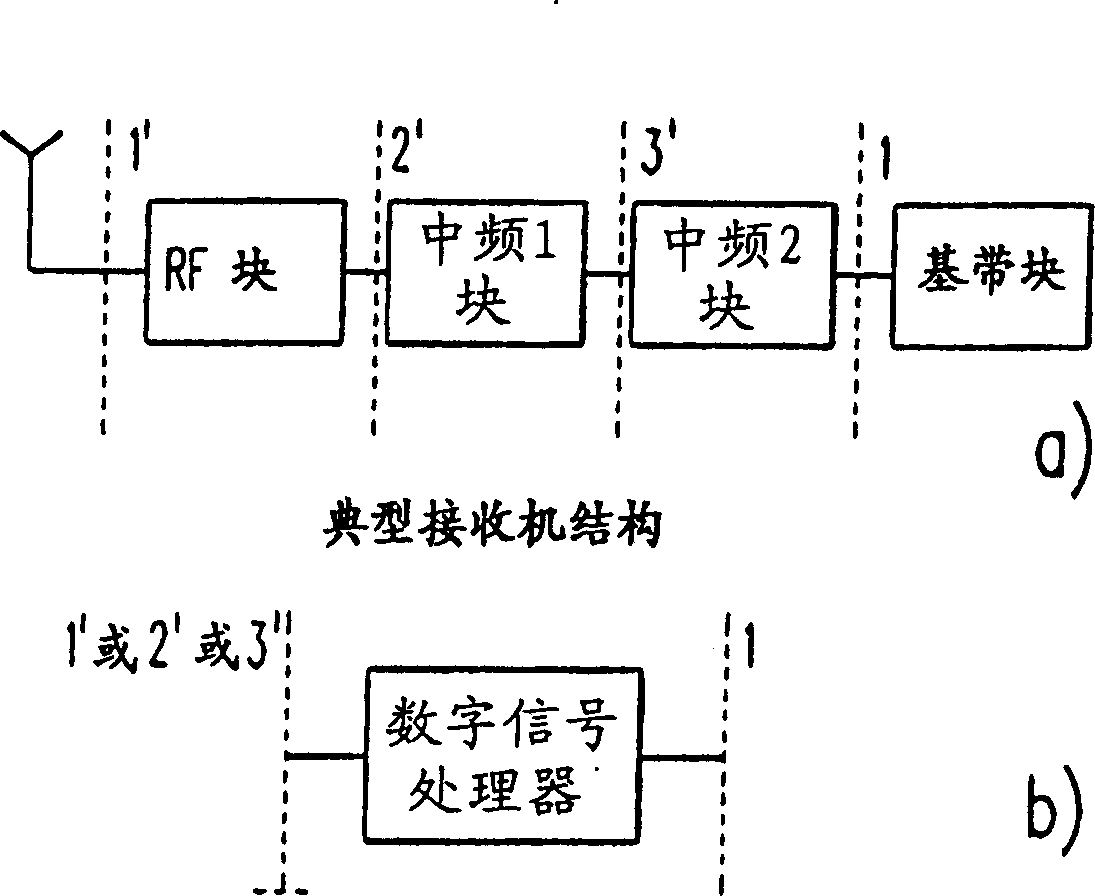Non-coherent six-port receiver
A receiver and phase technology, applied in phase modulation carrier system, amplitude modulation oscillation demodulation, digital transmission system and other directions, which can solve the problems that cannot be integrated in one chip, and the 6-port receiver is complicated.
- Summary
- Abstract
- Description
- Claims
- Application Information
AI Technical Summary
Problems solved by technology
Method used
Image
Examples
Embodiment Construction
[0038] The present invention is accomplished under the impetus of the following points:
[0039] - The present invention provides direct conversion (homodyne) systems that also work in direct conversion of millimeter waves and in conversion to baseband;
[0040] - the front end can be realized with passive components which are not ideal due to manufacturing tolerances;
[0041] - The invention essentially cancels the classical I / Q circuits and thus avoids their amplitude / phase imbalance;
[0042] - The invention allows the utilization of the very low power levels of the RF local oscillator;
[0043] - the receiver's hardware accommodates many possible different modulation techniques with different baseband channel bandwidths;
[0044] - The invention provides an inherently inexpensive concept characterized by high integration capabilities and low cost processes. The entire RF front end is ideally placed on one chip,
[0045] - The receiver supports a global strategy to red...
PUM
 Login to View More
Login to View More Abstract
Description
Claims
Application Information
 Login to View More
Login to View More - R&D
- Intellectual Property
- Life Sciences
- Materials
- Tech Scout
- Unparalleled Data Quality
- Higher Quality Content
- 60% Fewer Hallucinations
Browse by: Latest US Patents, China's latest patents, Technical Efficacy Thesaurus, Application Domain, Technology Topic, Popular Technical Reports.
© 2025 PatSnap. All rights reserved.Legal|Privacy policy|Modern Slavery Act Transparency Statement|Sitemap|About US| Contact US: help@patsnap.com



